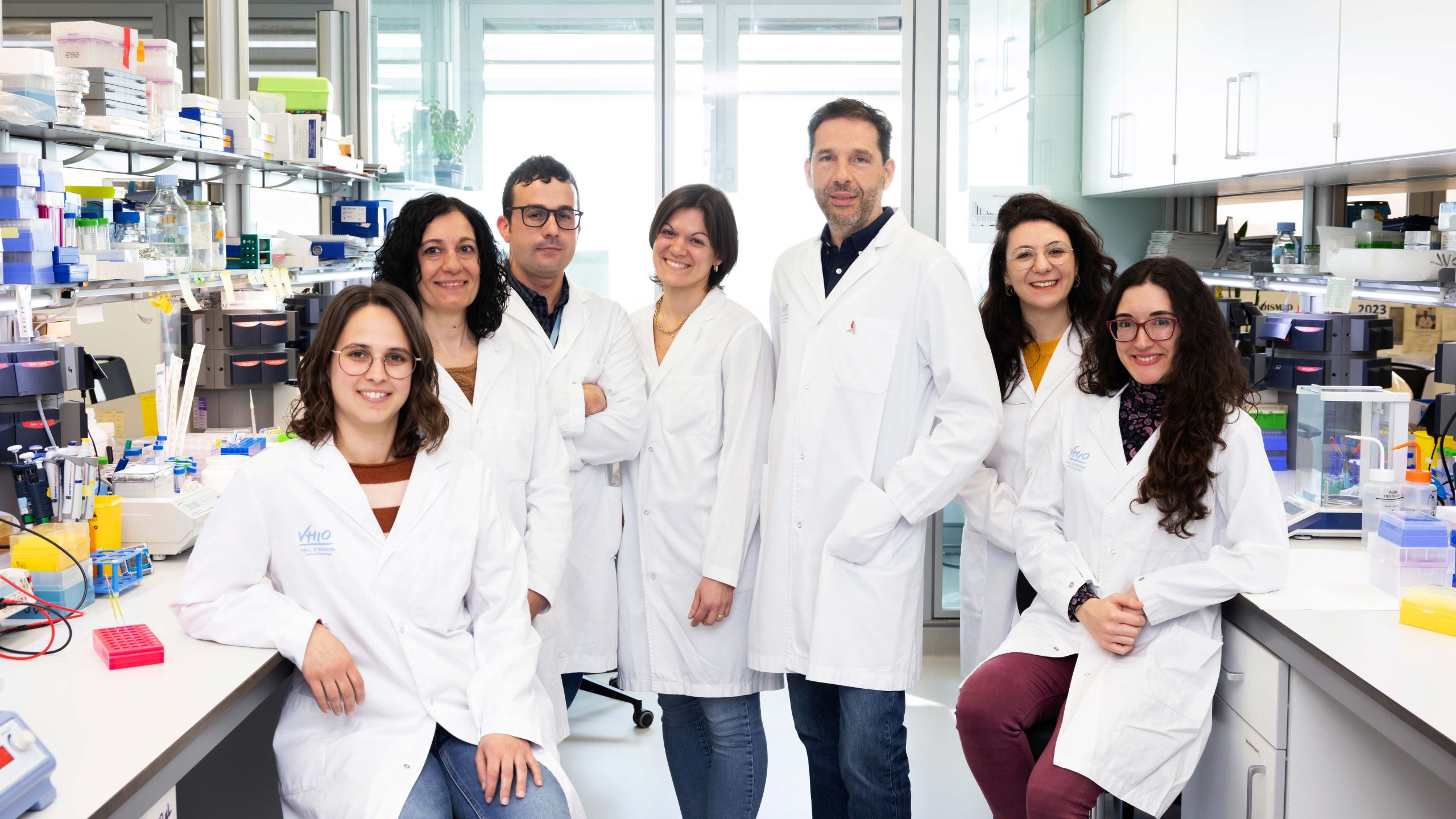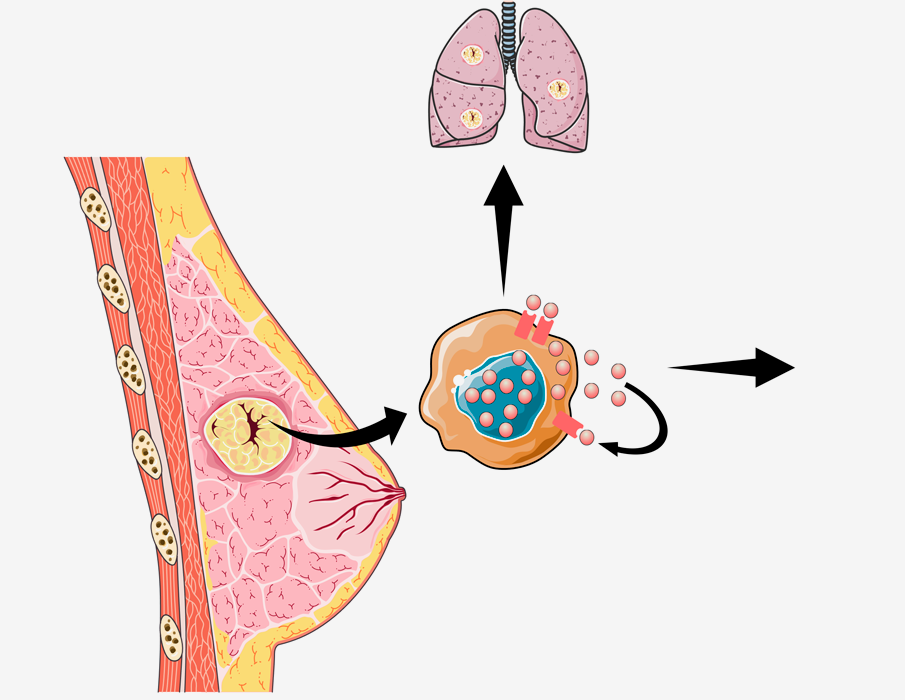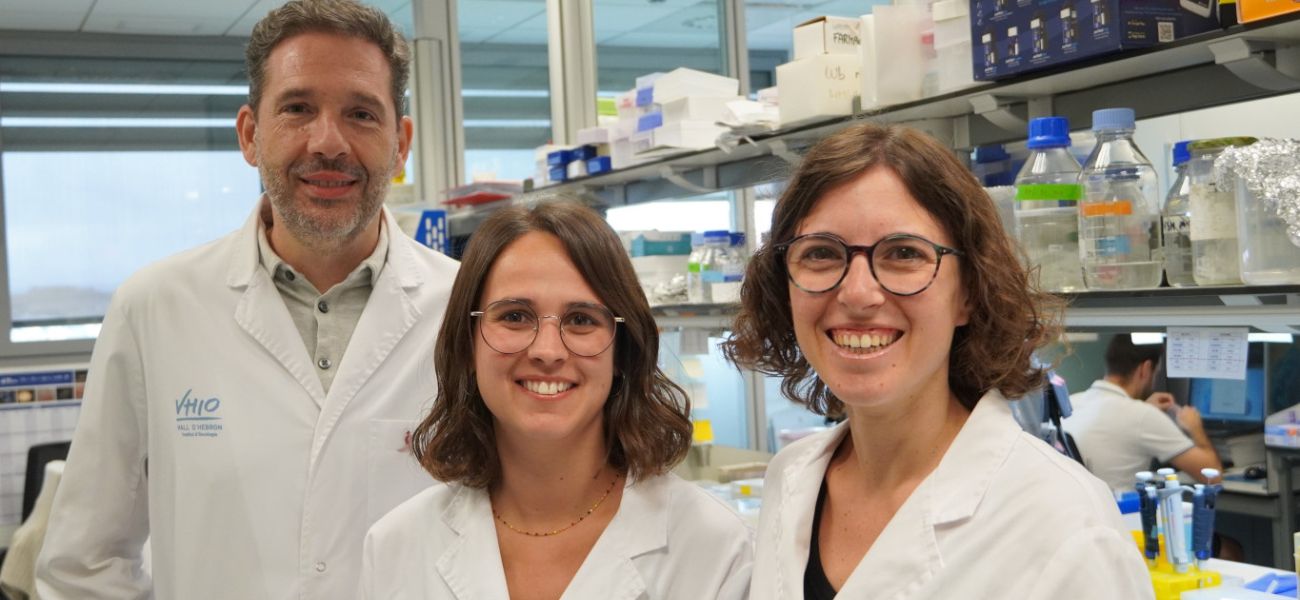
Tumor cell communication with its microenvironment plays an important role in tumor initiation and progression. Cancer cells hijack the tumor microenvironment ecosystem via paracrine signaling to promote a pro-oncogenic microenvironment that is crucial for the development of primary and metastatic tumors.
Our main aim is to characterize the mechanisms adopted by these cells to communicate amongst themselves as well as with their microenvironment during tumorigenesis. We aim to exploit these data to advance biomarker and drug target discovery.
Our methodological focus centers on the quantitative proteomic profiling of sub-proteomes linked to cell communication including the secretome, exosomes and the cell surface proteome. Over the last few years our laboratory has gone from studying cancer proteomics using a data-driven approach to interrogating the tumor cell protein communication using a hypothesis-driven approach. Through these studies we have shown that an alternative extracellular function of the nuclear protein HMGA1 mediates tumor invasion and metastasis in triple-negative breast cancer (TNBC) by becoming a ligand for the Receptor for Advanced Glycation End-product (RAGE).
We are also involved in identifying response biomarkers and mechanisms of resistance for new therapies used in the clinic to treat TNBC patients. In a recent project aimed at identifying secretome-based biomarkers of eribulin, we have characterized the drug tolerant persister (DTP) cells generated by chemotherapeutic agents, and identified GDF15 as a specific biomarker for DTPs that also has a role in their survival. Our data also shows that DTP cells surviving a high dose of cytotoxic drugs will give rise to different stable resistance mechanisms
- Characterize the role of RAGE in TNBC invasion and metastasis.
- The identification and characterization of mechanisms of response and acquired resistance to current therapies in breast cancer.
- The development and implementation of proteomic methodologies aimed at understanding cell communication in cancer biology.

Figure: Role of extracellular the HMGA1- RAGE pathway in triple-negative breast cancer (TNBC). The establishment of an HMGA1-RAGE autocrine loop in TNBC cells increases their migratory and invasive phenotype, and correlates with an increased incidence of distant metastasis in TNBC patients. Méndez et al. Int J Mol Sci. 2019. 20(23), 5950.
Group Leader
Josep Villanueva
Post-Doctoral Fellow
Chiara Bellio
Graduate Student
Mireia Pujals
Technicians
Marta Emperador
José Ángel Robles
Ferran Soler
Most relevant scientific publications
- Juliachs M, Pujals M, Bellio C, Meo-Evoli N, Duran JM, Zamora E, Parés M, Suñol A, Méndez O, Sánchez-Pla A, Canals F, Saura C, Villanueva J. Circulating SOD2 Is a Candidate Response Biomarker for Neoadjuvant Therapy in Breast Cancer. Cancers (Basel). 2022 Aug 10;14(16):3858.
- Bellio C, Emperador M, Castellano P, Gris-Oliver A, Canals F, Sánchez-Pla A, Zamora E, Arribas J, Saura C, Serra V, Tabernero J, Littlefield BA, Villanueva J. GDF15 Is an Eribulin Response Biomarker also Required for Survival of DTP Breast Cancer Cells. Cancers (Basel). 2022 May 23;14(10):2562.
- Pujals M, Resar L, Villanueva J. HMGA1, Moonlighting Protein Function, and Cellular Real Estate: Location, Location, Location! Biomolecules. 2021 Sep 9;11(9):1334.
- Méndez O, Pérez J, Soberino J, Racca F, Cortés J, Villanueva J. Clinical Implications of Extracellular HMGA1 in Breast Cancer. Int J Mol Sci. 2019. 20(23), 5950.
- Méndez O, Peg V, Salvans C, Pujals M, Fernández Y, Abasolo I, Pérez J, Matres A, Valeri M, Gregori J, Villarreal L, Schwartz S Jr, Ramon Y Cajal S, Tabernero J, Cortés J, Arribas J, Villanueva J. Extracellular HMGA1 Promotes Tumor Invasion and Metastasis in Triple-Negative Breast Cancer. Clin Cancer Res. 2018 Dec 15;24(24):6367-6382
- Méndez O, Villanueva J. Challenges and opportunities for cell line secretomes in cancer proteomics.Proteomics Clin Appl. 2015;9(3-4):348-357.
- Katsila T, Juliachs M, Gregori J, Macarulla T, Villarreal L, Bardelli A, Torrance C, Elez E, Tabernero J, Villanueva J. Circulating pEGFR is a candidate response biomarker of cetuximab therapy in colorectal cancer. Clin. Cancer Res. 2014 Dec; 20(24): 6346-56
- Villarreal L, Méndez O, Salvans C, Gregori J, Baselga J, Villanueva J*. Unconventionalsecretion is a major contributor of cancer cell line secretomes. Mol Cell Proteomics. 2013, 12(5):1046-60.
- Gregori J, Méndez O, Katsila T, Pujals M, Salvans C, Villarreal L, Arribas J, Tabernero J, Sánchez A, Villanueva J. Enhancing the Biological Relevance of Secretome-Based Proteomics by Linking Tumor Cell Proliferation and Protein Secretion. J. Proteome Res. 2014 Jul;
- Gregori J, Villarreal L, Sánchez A, Baselga J, Villanueva J. An effect size filter improves the reproducibility in spectral counting-based comparative proteomics. J Proteomics 2013 Dec; 95: 55-65
- Gregori J, Villarreal L, Méndez O, Sánchez A, Baselga J, Villanueva J. Batch effects correction improves the sensitivity of significance tests in spectral counting-based comparative discovery proteomics. J Proteomics 2012 Jul; 75(13): 3938-51
- Lawlor K, Nazarian A, Lacomis L, Tempst P, Villanueva J*. Pathway-based biomarker search by high-throughput proteomics profiling of secretomes. J Proteome Research. 2009. 8(3):1489-503.
All publications
- Juliachs M, Pujals M, Bellio C, Meo-Evoli N, Duran JM, Zamora E, Parés M, Suñol A, Méndez O, Sánchez-Pla A, Canals F, Saura C, Villanueva J. Circulating SOD2 Is a Candidate Response Biomarker for Neoadjuvant Therapy in Breast Cancer. Cancers (Basel). 2022 Aug 10;14(16):3858.
- Bellio C, Emperador M, Castellano P, Gris-Oliver A, Canals F, Sánchez-Pla A, Zamora E, Arribas J, Saura C, Serra V, Tabernero J, Littlefield BA, Villanueva J. GDF15 Is an Eribulin Response Biomarker also Required for Survival of DTP Breast Cancer Cells. Cancers (Basel). 2022 May 23;14(10):2562.
- Pujals M, Resar L, Villanueva J. HMGA1, Moonlighting Protein Function, and Cellular Real Estate: Location, Location, Location! Biomolecules. 2021 Sep 9;11(9):1334.
- Méndez O, Pérez J, Soberino J, Racca F, Cortés J, Villanueva J. Clinical Implications of Extracellular HMGA1 in Breast Cancer. Int J Mol Sci. 2019, 20(23), 5950.
- Arreal L, Piva M, Fernández S, Revandkar A, Schaub-Clerigué A, Villanueva J, Zabala-Letona A, Pujana M, Astobiza I, Cortazar AR, Hermanova I, Bozal-Basterra L, Arruabarrena-Aristorena A, Crespo JR, Valcarcel-Jimenez L, Zúñiga-García P, Canals F, Torrano V, Barrio R, Sutherland JD, Alimonti A, Martin-Martin N, Carracedo A.Targeting PML in triple negative breast cancer elicits growth suppression and senescence. Cell Death Differ. 2019 Oct 1. doi: 10.1038/s41418-019-0407-5.
- Méndez O, Peg V, Salvans C, Pujals M, Fernández Y, Abasolo I, Pérez J, Matres A, Valeri M, Gregori J, Villarreal L, Schwartz S Jr, Ramon Y Cajal S, Tabernero J, Cortés J, Arribas J, Villanueva J. Extracellular HMGA1 Promotes Tumor Invasion and Metastasis in Triple-Negative Breast Cancer. Clin Cancer Res. 2018 Dec 15;24(24):6367-6382
- Zacarias-Fluck MF, Morancho B, Vicario R, Luque Garcia A, Escorihuela M, Villanueva J, Rubio IT, Arribas J. Effect of cellular senescence on the growth of HER2-positive breast cancers. J. Natl. Cancer Inst. 2015 May; 107(5)
- Morancho B, Martínez-Barriocanal Á, Villanueva J, Arribas J. Role of ADAM17 in the non-cell autonomous effects of oncogene-induced senescence. Breast Cancer Res. 2015; 17: 106
- Katsila T, Juliachs M, Gregori J, Macarulla T, Villarreal L, Bardelli A, Torrance C, Elez E, Tabernero J, Villanueva J. Circulating pEGFR is a candidate response biomarker of cetuximab therapy in colorectal cancer. Clin. Cancer Res. 2014 Dec; 20(24): 6346-56
- Nazarian A, Lawlor K, Yi SS, Philip J, Ghosh M, Yaneva M, Villanueva J, Saghatelian A, Assel M, Vickers AJ, Eastham JA, Scher HI, Carver BS, Lilja H, Tempst P. Inhibition of circulating dipeptidyl peptidase 4 activity in patients with metastatic prostate cancer. Mol. Cell Proteomics 2014 Nov; 13(11): 3082-96
- Gregori J, Méndez O, Katsila T, Pujals M, Salvans C, Villarreal L, Arribas J, Tabernero J, Sánchez A, Villanueva J. Enhancing the Biological Relevance of Secretome-Based Proteomics by Linking Tumor Cell Proliferation and Protein Secretion. J. Proteome Res. 2014 Jul;
- Segura V, Medina-Aunon JA, Mora MI, Martínez-Bartolomé S, Abian J, Aloria K, Antúnez O, Arizmendi JM, Azkargorta M, Barceló-Batllori S, Beaskoetxea J, Bech-Serra JJ, Blanco F, Monteiro MB, Cáceres D, Canals F, Carrascal M, Casal JI, Clemente F, Colomé N, Dasilva N, Díaz P, Elortza F, Fernández-Puente P, Fuentes M, Gallardo O, Gharbi SI, Gil C, González-Tejedo C, Hernáez ML, Lombardía M, Lopez-Lucendo M, Marcilla M, Mato JM, Mendes M, Oliveira E, Orera I, Pascual-Montano A, Prieto G, Ruiz-Romero C, Sánchez del Pino MM, Tabas-Madrid D, Valero ML, Vialas V, Villanueva J, Albar JP, Corrales FJ. Surfing transcriptomic landscapes. A step beyond the annotation of chromosome 16 proteome. J. Proteome Res. 2014 Jan; 13(1): 158-72
- Gregori J, Villarreal L, Sánchez A, Baselga J, Villanueva J. An effect size filter improves the reproducibility in spectral counting-based comparative proteomics. J Proteomics 2013 Dec; 95: 55-65
- Angelini PD, Zacarias Fluck MF, Pedersen K, Parra-Palau JL, Guiu M, Bernadó Morales C, Vicario R, Luque-García A, Navalpotro NP, Giralt J, Canals F, Gomis RR, Tabernero J, Baselga J, Villanueva J, Arribas J. Constitutive HER2 signaling promotes breast cancer metastasis through cellular senescence.Cancer Res. 2013 Jan; 73(1): 450-8
- Gregori J, Villarreal L, Méndez O, Sánchez A, Baselga J, Villanueva J. Batch effects correction improves the sensitivity of significance tests in spectral counting-based comparative discovery proteomics. J Proteomics 2012 Jul; 75(13): 3938-51
- Sánchez A, Villanueva J. PI3K-based molecular signatures link high PI3K pathway activity with low ER levels in ER+ breast cancer. Expert Rev Proteomics 2010 Dec; 7(6): 819-21
- Villanueva J, Nazarian A, Lawlor K, Tempst P. Monitoring peptidase activities in complex proteomes by MALDI-TOF mass spectrometry. Nat Protoc 2009; 4(8): 1167-83
- Lawlor K, Nazarian A, Lacomis L, Tempst P, Villanueva J. Pathway-based biomarker search by high-throughput proteomics profiling of secretomes. J. Proteome Res. 2009 Mar; 8(3): 1489-503
- Villanueva J, Nazarian A, Lawlor K, Yi SS, Robbins RJ, Tempst P. A sequence-specific exopeptidase activity test (SSEAT) for “functional” biomarker discovery. Mol. Cell Proteomics 2008 Mar; 7(3): 509-18
- Villanueva J, Philip J, DeNoyer L, Tempst P. Data analysis of assorted serum peptidome profiles. Nat Protoc 2007; 2(3): 588-602
- Villanueva J, Lawlor K, Toledo-Crow R, Tempst P. Automated serum peptide profiling. Nat Protoc 2006; 1(2): 880-91
- Villanueva J, Martorella AJ, Lawlor K, Philip J, Fleisher M, Robbins RJ, Tempst P. Serum peptidome patterns that distinguish metastatic thyroid carcinoma from cancer-free controls are unbiased by gender and age. Mol. Cell Proteomics 2006 Oct; 5(10): 1840-52
- Villanueva J, Shaffer DR, Philip J, Chaparro CA, Erdjument-Bromage H, Olshen AB, Fleisher M, Lilja H, Brogi E, Boyd J, Sánchez-Carbayo M, Holland EC, Cordon-Cardo C, Scher HI, Tempst P. Differential exoprotease activities confer tumor-specific serum peptidome patterns. J. Clin. Invest. 2006 Jan; 116(1): 271-84
- Villanueva J, Philip J, Entenberg D, Chaparro CA, Tanwar MK, Holland EC, Tempst P. Serum peptide profiling by magnetic particle-assisted, automated sample processing and MALDI-TOF mass spectrometry. Anal. Chem. 2004 Mar; 76(6): 1560-70
- Diagnostic and Therapeutic implications of the HMGA1-RAGE signaling pathway in Triple Negative Breast Cancer. Funding Agency: Instituto de Salud Carlos III (ISCIII). 2020 – 2022.
- El microambient immune tumoral en la patogènesi i control del linfoma de cèl.lules del mantell. Funding Agency: Fundació La Marató de TV3 2020-2022.
- We are part of CIBERONC’s Programa de Tumores del Tracto Digestivo, as part of the group (Program ID: CB16/12/00259) led by VHIO’s Director and Head of our Gastrointestinal & Endocrine Tumors Group, Josep Tabernero (PI: Teresa Macarulla).












